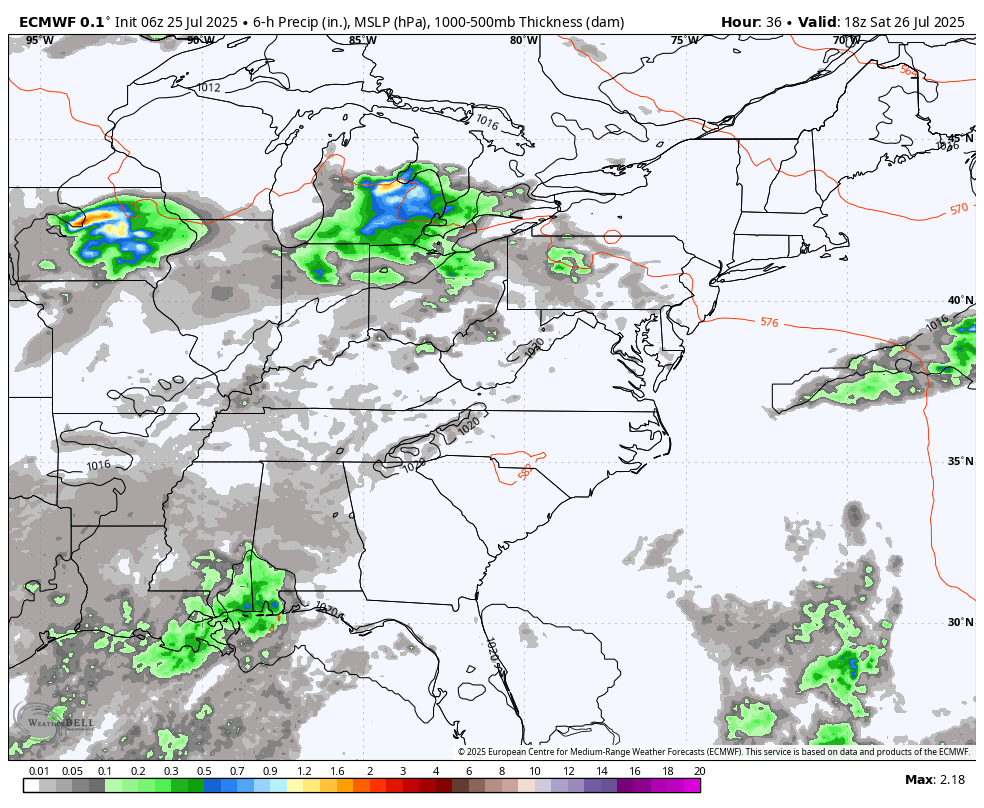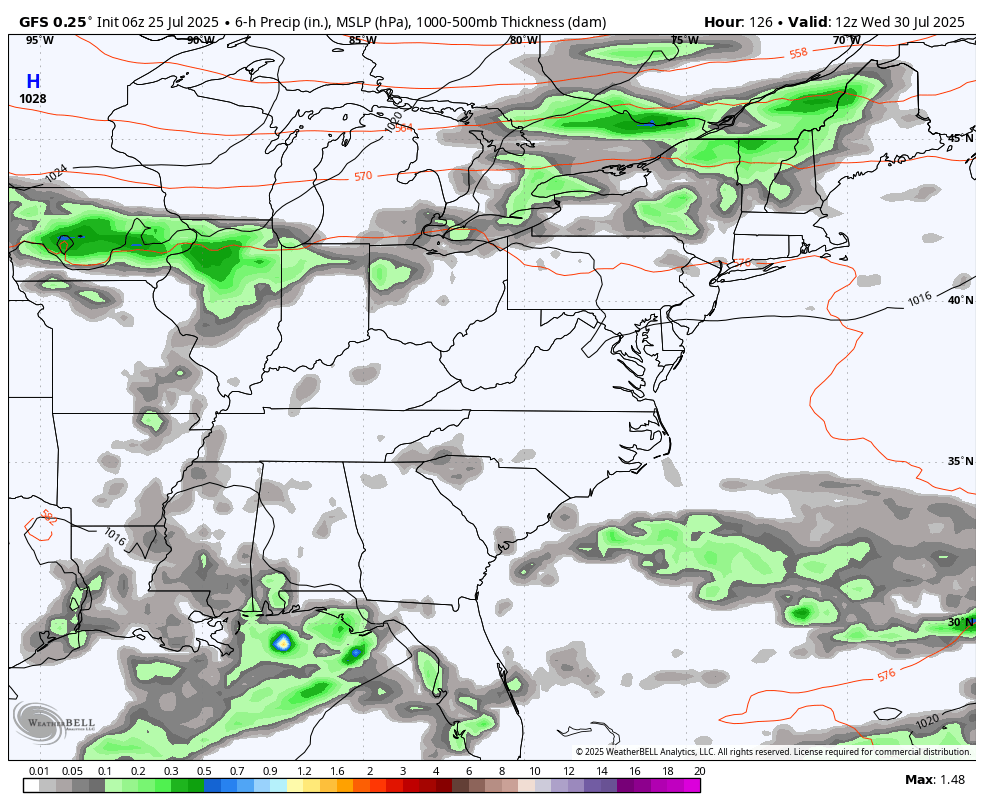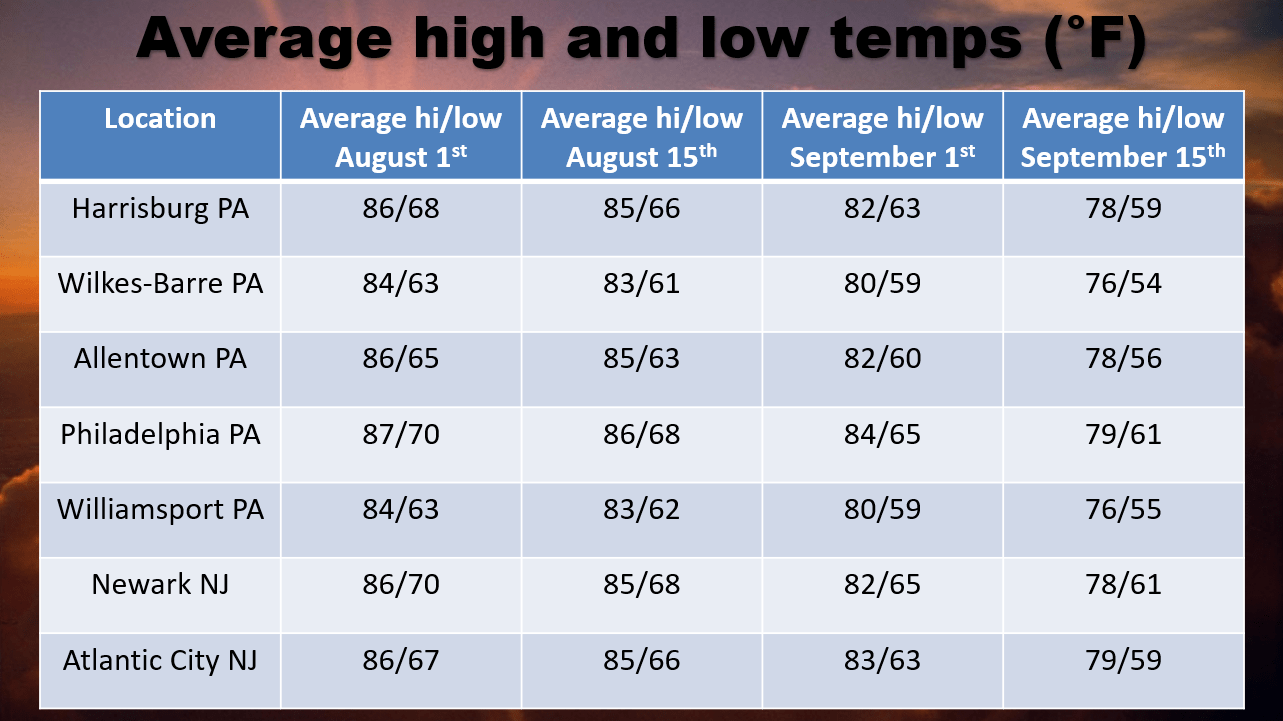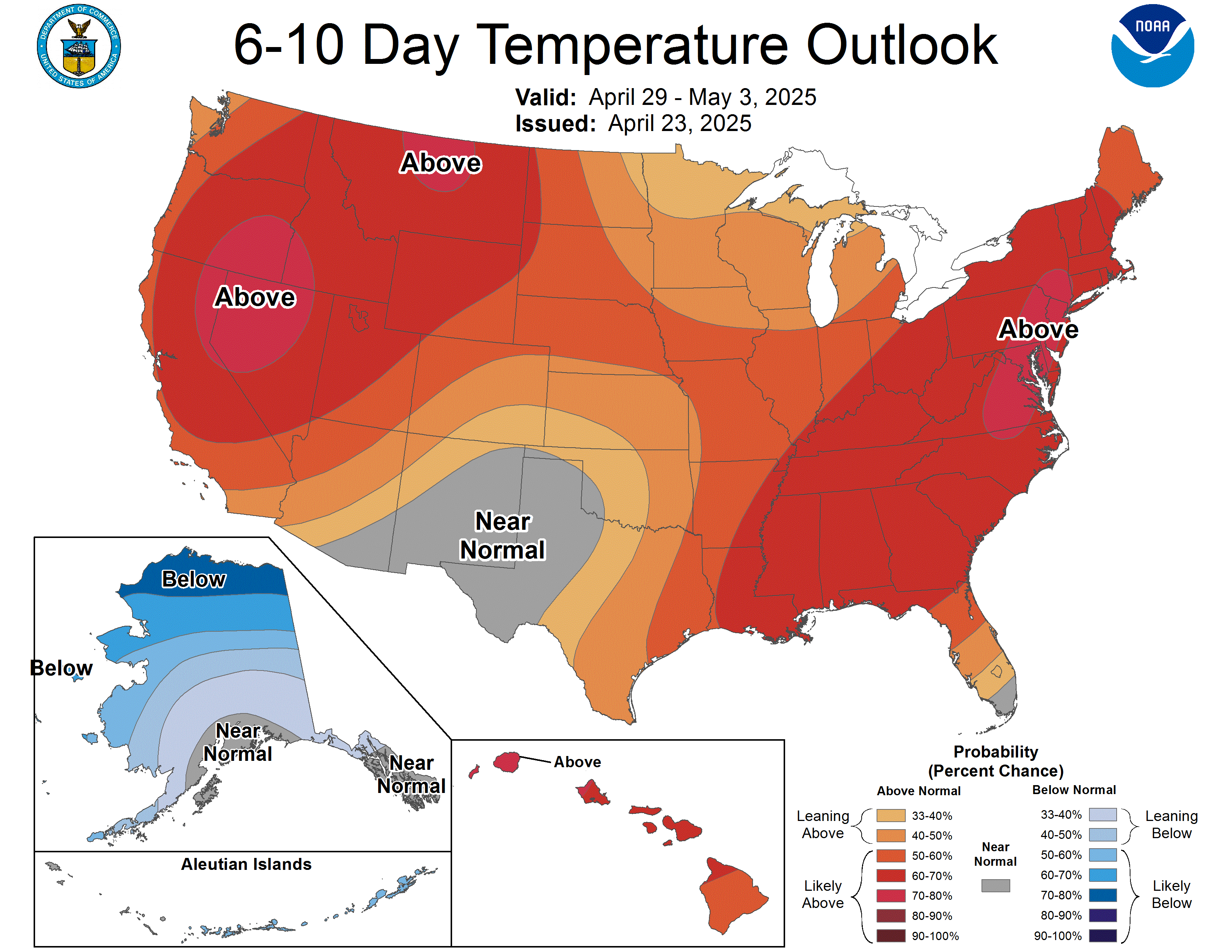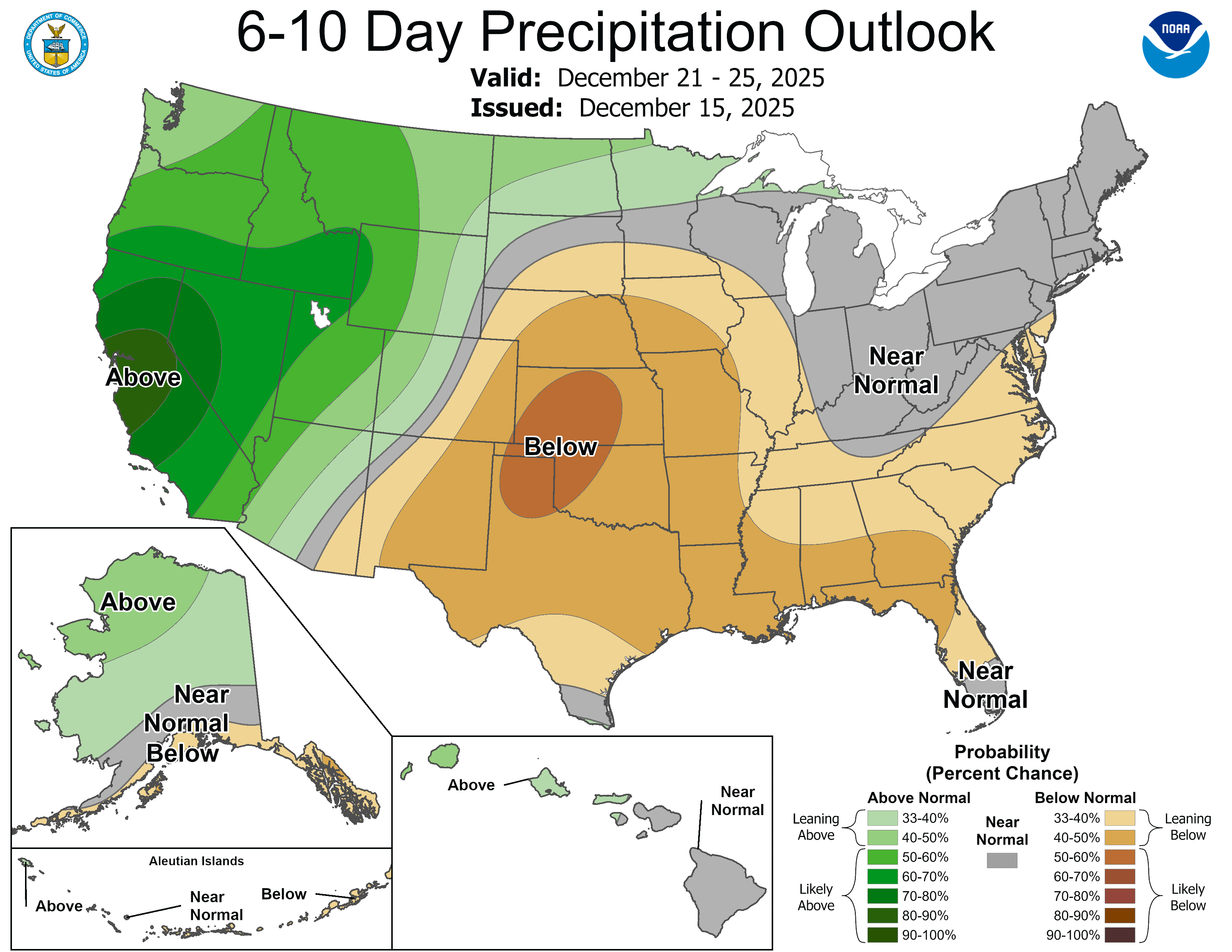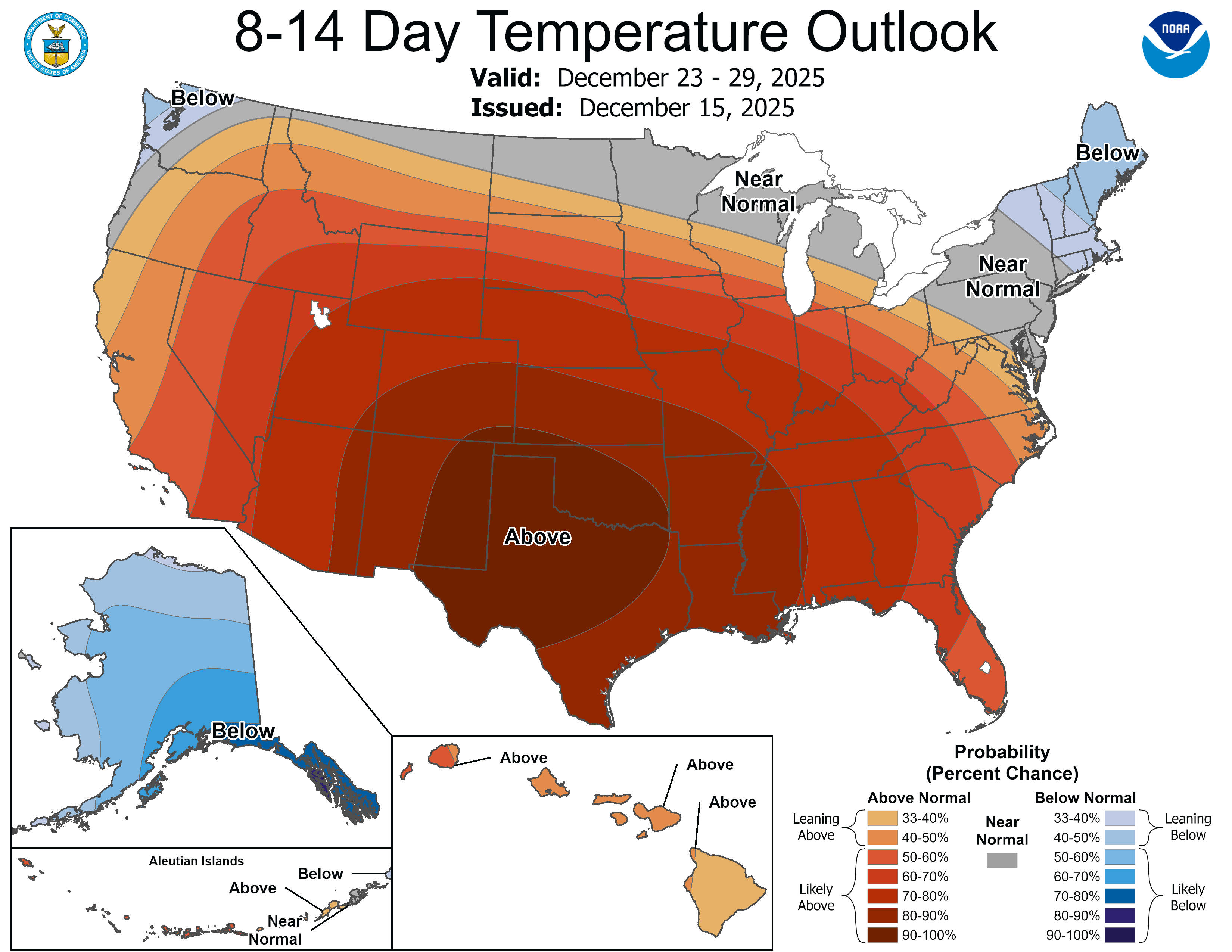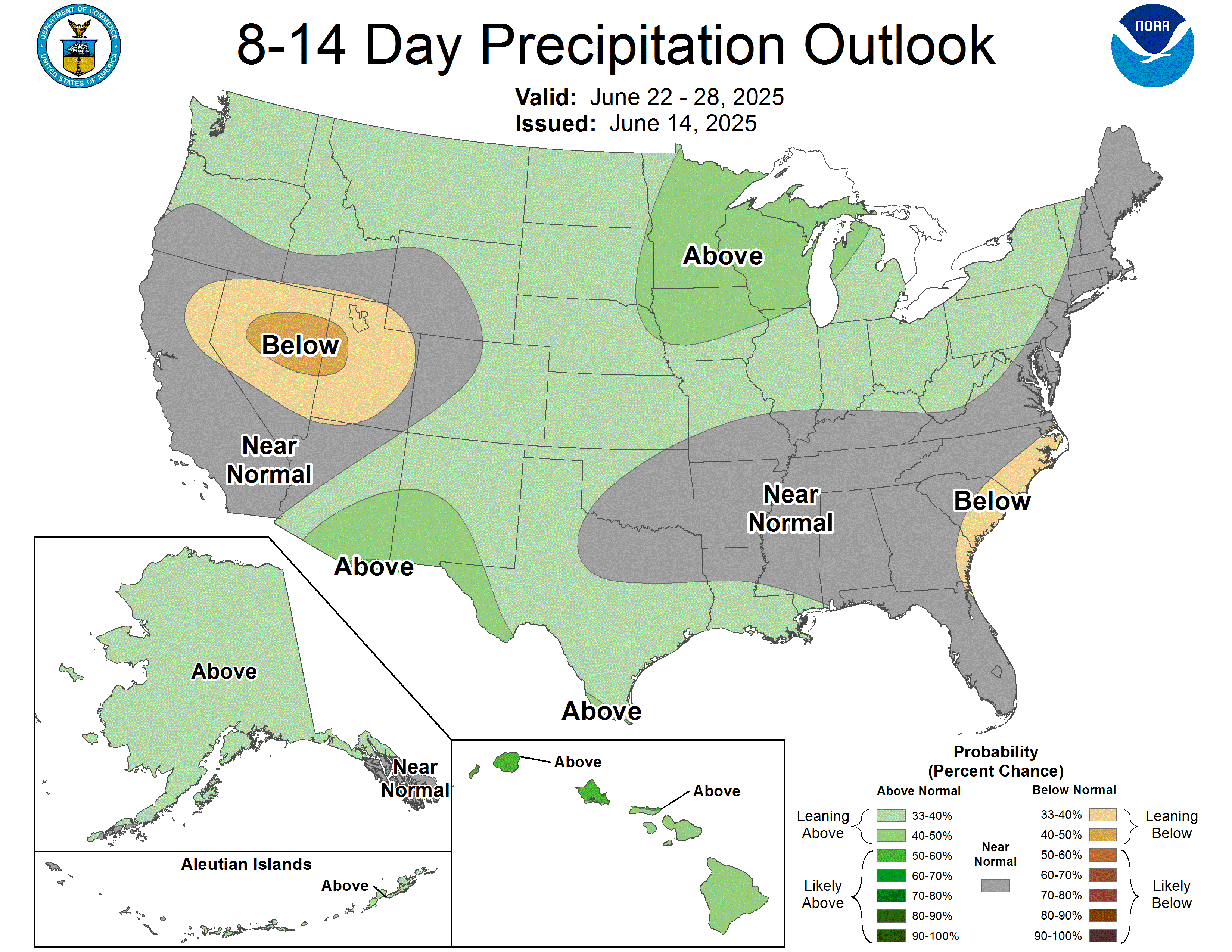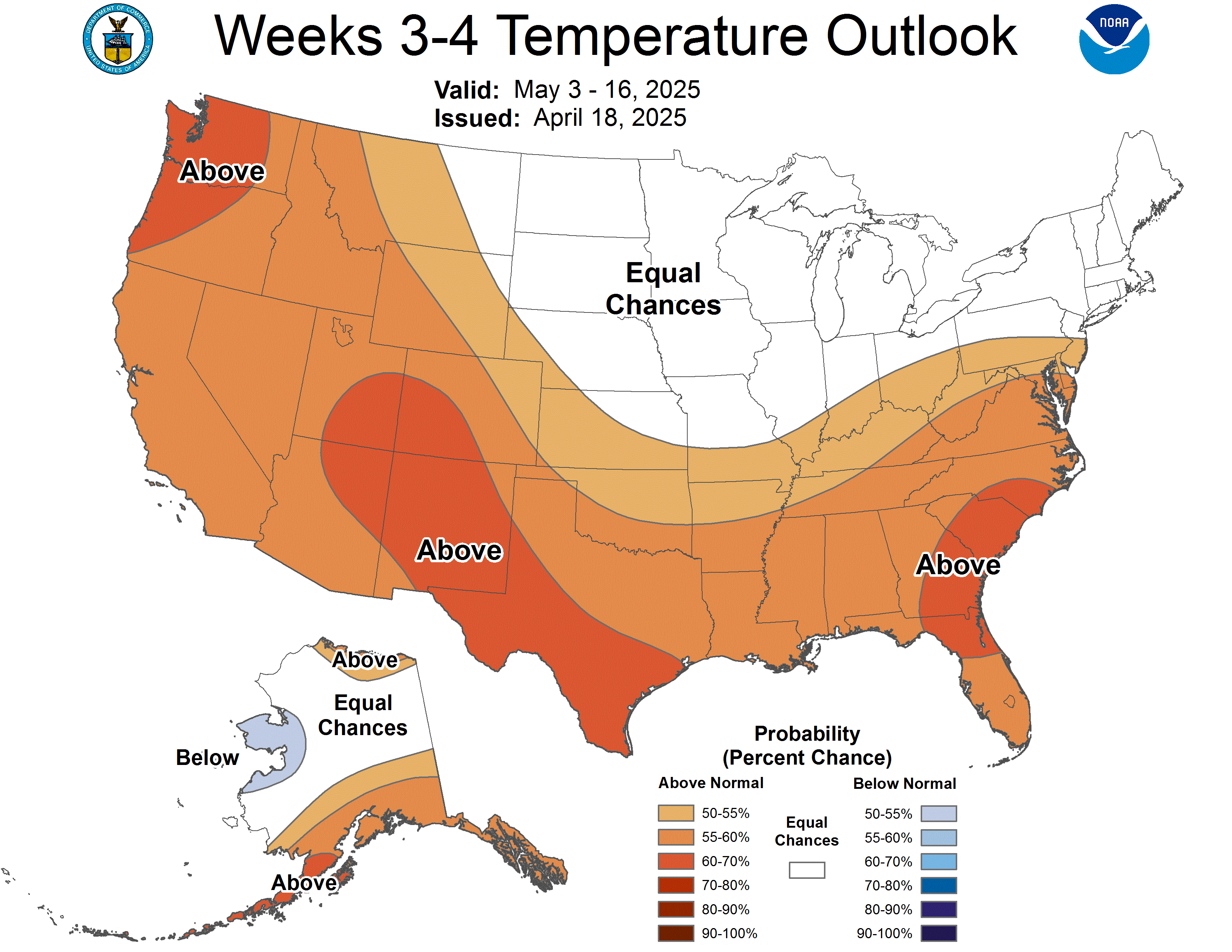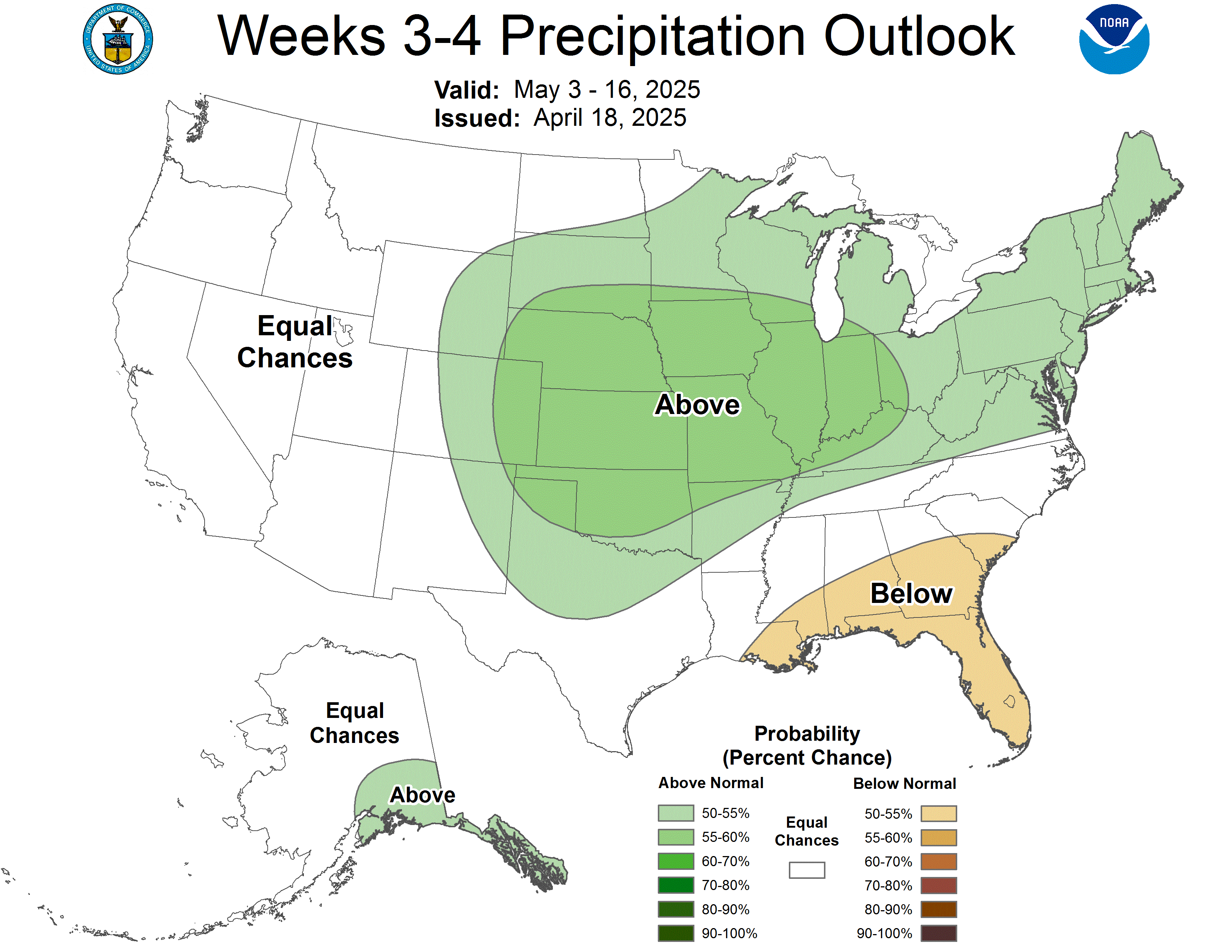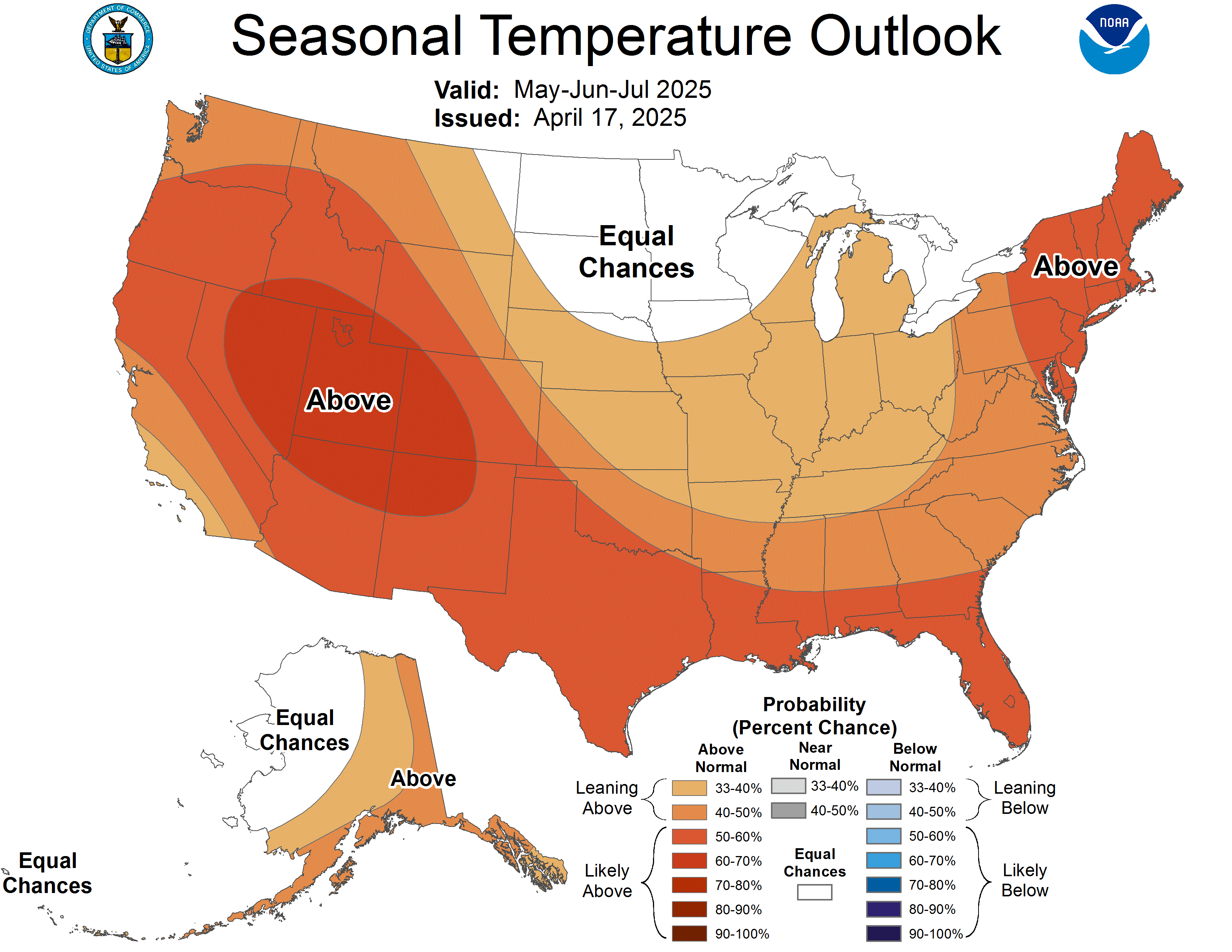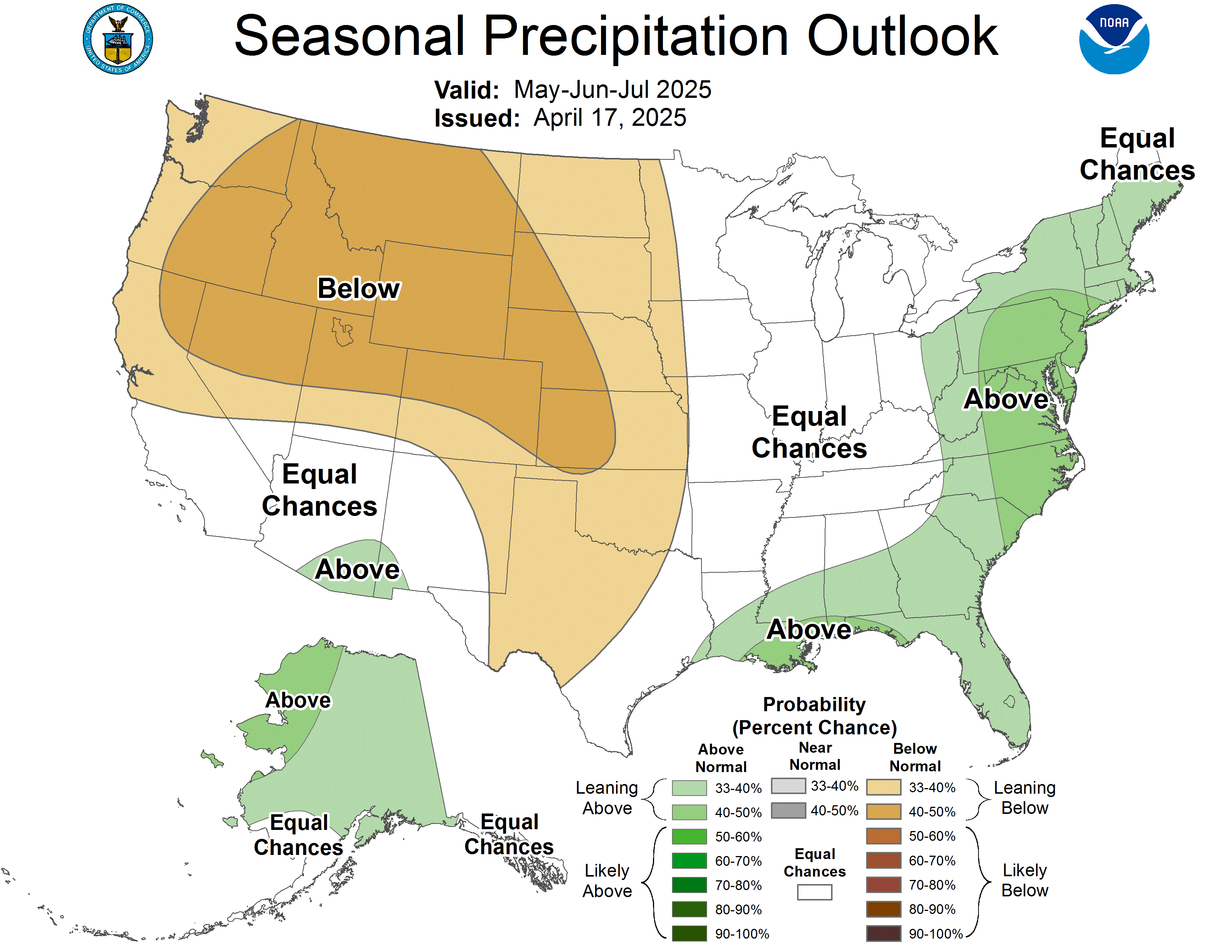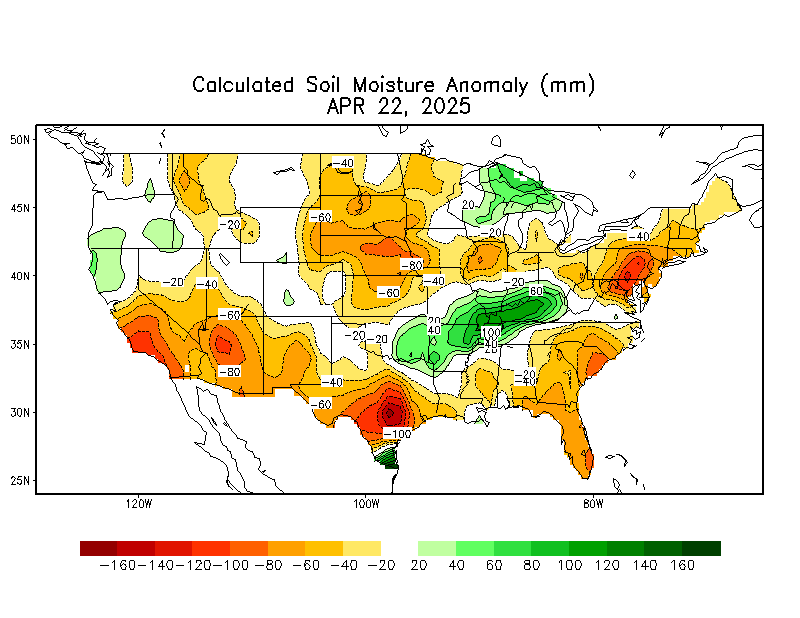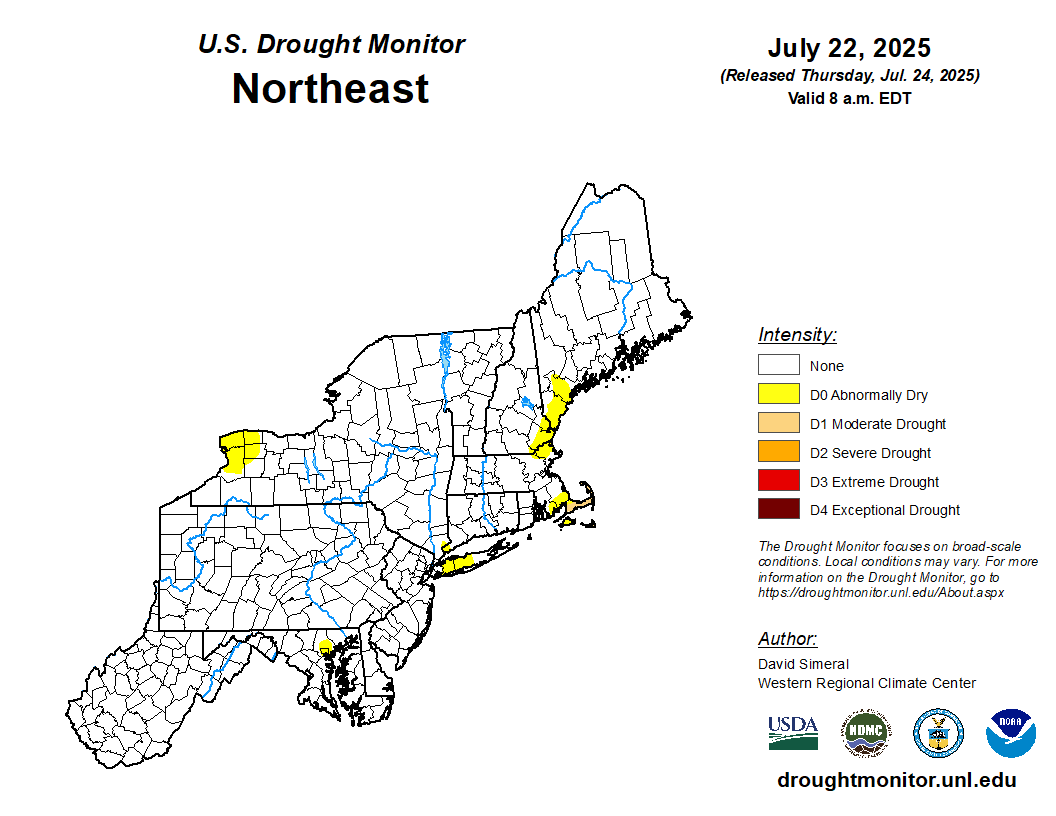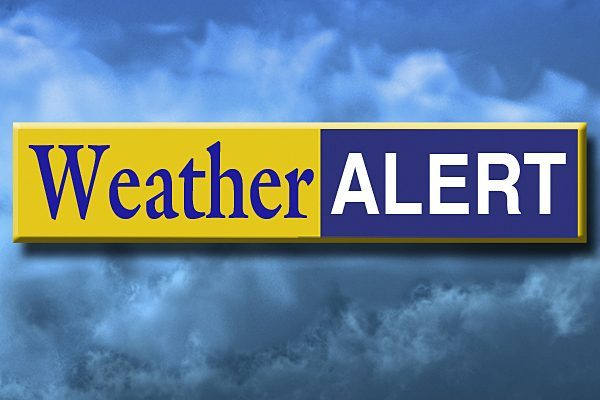OVERVIEW: The US drought monitor (photo toward the bottom of this outlook) maintains NO drought areas within our Pennsylvania, New Jersey, or Delaware locales. One abnormally dry area remains over Southern Baltimore County in Maryland, otherwise the remainder of Maryland has no drought designation. This is largely due to quite an impressive month of May with a top 5 rainfall month all-time in some locations, and generally near average precipitation following in June, and near average precipitation thus far in July. Going forward, the month of July as a whole projections were slightly adjusted this week to a near average (-0.5" to +0.5") precipitation departure for the month as a whole. August monthly projections were maintained this week for a near average (-0.5" to +0.5") precipitation projection in accordance with longer term climate models and global observation trends.
Shorter term, a cold front will move through the region Friday, then stalls to the SW of the region on Saturday. It returns northeastward as a warm front Saturday night and Sunday, leading to scattered showers and perhaps thunderstorms from later Saturday night through Sunday morning. Until the system fully clears, scattered thunderstorms will still be possible Sunday afternoon. It returns to hot and humid conditions in the early to middle part of next week, then a cold front arrives Wednesday or Wednesday night effectively ending the heat/humidity and a week or longer of slightly below average temperatures and more comfortable humidity will follow. Scattered showers/storms will be possible with that front Wednesday, then a mostly dry week will follow accompanying the aforementioned cooler airmass. Next cold front is due to arrive near August 6th.
The month of July projections were slightly lowered this week to a near average (-0.5" to +0.5") precipitation departure, with the expectation that overall precipitation events and frequency will be limited over the last week of this month. The month of August projections for the month as a whole were maintained this week to a near average (-0.5" to +0.5") precipitation departure, using longer term climate models as well as seasonal trends.
Breakdown of precipitation departures from normal over the next several weeks:
July 26th - August 1st: Near to slightly above average
August 2nd - August 8th: Near to slightly below average
August 9th - August 15th: Near to slightly above average
August 16th - August 22nd: Near to slightly above average
August 23rd - August 29th: Near to slightly below average
August 30th - September 5th: Near to slightly below average
Public/free available maps will be updated when a threat is imminent for significant weather on the weather alerts page throughout the year: http://epawaweather.com/weather-alerts/
Note: Any image below is clickable for larger viewing


